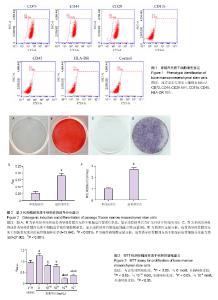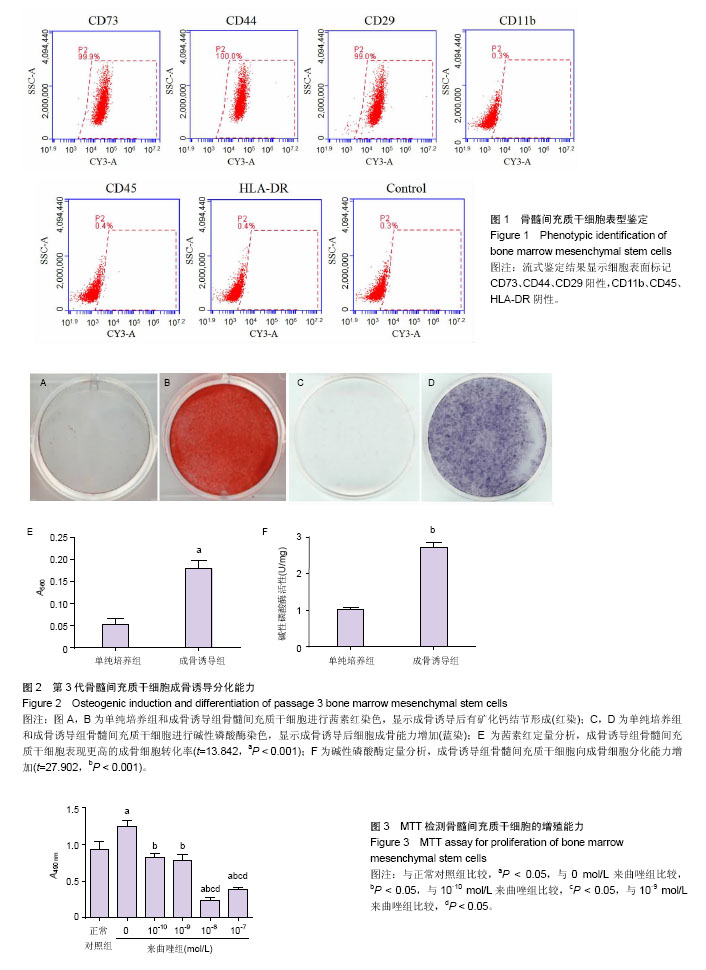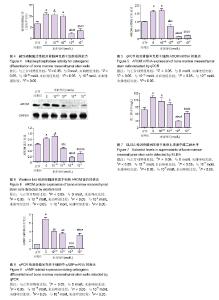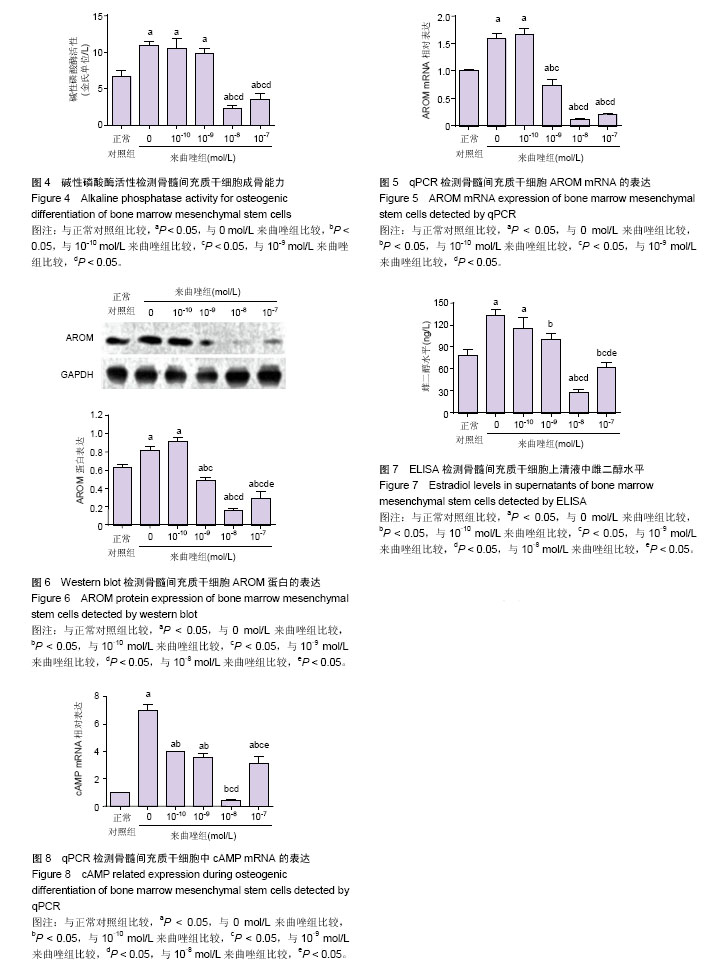| [1] 张颖,张博,张治国,等.从肝脾肾三脏探讨绝经后骨质疏松症的发病机理[J].中国中医基础医学杂志,2012,18(1):36, 42.[2] 李冠慧,黄明芳,李西海,等.基于肾主骨生髓探讨骨髓基质干细胞与绝经后骨质疏松肾虚证的关系[J].中国老年学杂志,2016, 36(15):3846-3848.[3] Liu XD, Cai F, Liu L,et al. MicroRNA-210 is involved in the regulation of postmenopausal osteoporosis through promotion of VEGF expression and osteoblast differentiation. Biol Chem. 2015;396(4):339-347.[4] Chen FP, Hu CH, Wang KC. Estrogen modulates osteogenic activity and estrogen receptor mRNA in mesenchymal stem cells of women. Climacteric. 2013;16(1):154-160.[5] Rodríguez JP, Astudillo P, Ríos S, et al. Involvement of adipogenic potential of human bone marrow mesenchymal stem cells (MSCs) in osteoporosis. Curr Stem Cell Res Ther. 2008;3(3):208-218.[6] 魏秋实,陈镇秋,何伟,等.芳香化酶和雌激素相关受体在人骨髓间充质干细胞中的表达[J].中国组织工程研究, 2015, 19(36): 5758-5763.[7] Fan JZ, Yang L, Meng GL, et al. Estrogen improves the proliferation and differentiation of hBMSCs derived from postmenopausal osteoporosis through notch signaling pathway. Mol Cell Biochem. 2014;392(1-2):85-93.[8] Luo Z, Liu M, Sun L, et al. Icariin recovers the osteogenic differentiation and bone formation of bone marrow stromal cells from a rat model of estrogen deficiency-induced osteoporosis. Mol Med Rep. 2015;12(1):382-388.[9] Zeng QM, Liu DC, Zhang XC, et al. Estrogen deficiency inducing shifted cytokines profile in bone marrow stromal cells inhibits Treg cells function in OVX mice. Cell Mol Biol (Noisy-le-grand). 2015;61(2):64-68.[10] Shuai B, Shen L, Zhu R, et al. Effect of Qing'e formula on the in vitro differentiation of bone marrow-derived mesenchymal stem cells from proximal femurs of postmenopausal osteoporotic mice. BMC Complement Altern Med. 2015; 15:250.[11] Zhou S, Zilberman Y, Wassermann K, et al. Estrogen modulates estrogen receptor alpha and beta expression, osteogenic activity, and apoptosis in mesenchymal stem cells (MSCs) of osteoporotic mice. J Cell Biochem Suppl. 2001; Suppl 36:144-155. [12] 王俊玲,黄思敏,魏秋实,等.大鼠骨髓间充质干细胞及不同组织中17β-雌二醇的表达情况[J].实用医学杂志, 2015, 31(6):905-907. [13] Li J, Peng X, Zeng X, et al. Estrogen Secreted by Mesenchymal Stem Cells Necessarily Determines Their Feasibility of Therapeutical Application. Sci Rep. 2015;5:15286.[14] Perez EA, Weilbaecher K. Aromatase inhibitors and bone loss. Oncology (Williston Park). 2006;20(9):1029-1039.[15] De Andrés PJ, Cáceres S, Clemente M, et al. Profile of Steroid Receptors and Increased Aromatase Immunoexpression in Canine Inflammatory Mammary Cancer as a Potential Therapeutic Target. Reprod Domest Anim. 2016;51(2):269-275.[16] Sun S, Wang F, Dou H, et al. Preventive effect of zoledronic acid on aromatase inhibitor-associated bone loss for postmenopausal breast cancer patients receiving adjuvant letrozole. Onco Targets Ther. 2016;9:6029-6036.[17] Beom SH, Oh J, Kim TY, et al. Efficacy of Letrozole as First-line Treatment of Postmenopausal Women with Hormone Receptor-positive Metastatic Breast Cancer in Korea.Cancer Res Treat. 2016 Aug 23. doi: 10.4143/crt.2016.259. [Epub ahead of print].[18] Park JH, Kang MJ, Ahn JH, et al. Phase II trial of neoadjuvant letrozole and lapatinib in Asian postmenopausal women with estrogen receptor (ER) and human epidermal growth factor receptor 2 (HER2)-positive breast cancer [Neo-ALL-IN]: Highlighting the TILs, ER expressional change after neoadjuvant treatment, and FES-PET as potential significant biomarkers. Cancer Chemother Pharmacol. 2016;78(4): 685-695.[19] Riancho JA, Sañudo C, Valero C, et al. Association of the aromatase gene alleles with BMD: epidemiological and functional evidence. J Bone Miner Res. 2009;24(10): 1709-1718.[20] 王振纲,刘淑英,卢琦华,等.中医辨证与血浆环磷酸腺苷(cAMP)含量的关系[J].北京医学, 1979, 1(2):95-97.[21] 毕增祺,邹立军,康子琦,等.慢性肾炎血浆前列腺素、环核苷酸含量与中医肾虚的关系[J].中国医学科学院学报, 1981, 3(4): 283-285.[22] 江明, 陈扬荣. 慢支肺脾肾虚证型与血浆环核苷酸cAMP和cGMP关系的探讨[J].福建中医学院学报, 1995, 5(1):16-17.[23] 王培源,刘蓬,黄燕晓.肾阴虚豚鼠模型的建立及对内耳形态学影响的实验研究[J].辽宁中医药大学学报, 2006,8(4):135-137.[24] Xu F, Ding Y, Guo Y, et al. Anti-osteoporosis effect of Epimedium via an estrogen-like mechanism based on a system-level approach. J Ethnopharmacol. 2016;177: 148-160.[25] Zhang D, Fong C, Jia Z, et al. Icariin Stimulates Differentiation and Suppresses Adipocytic Transdifferentiation of Primary Osteoblasts Through Estrogen Receptor-Mediated Pathway. Calcif Tissue Int. 2016;99(2):187-198.[26] Wei Z, Wang M, Hong M, et al. Icariin exerts estrogen-like activity in ameliorating EAE via mediating estrogen receptor β, modulating HPA function and glucocorticoid receptor expression. Am J Transl Res. 2016;8(4):1910-1918.[27] Luo Z, Liu M, Sun L, et al. Icariin recovers the osteogenic differentiation and bone formation of bone marrow stromal cells from a rat model of estrogen deficiency-induced osteoporosis. Mol Med Rep. 2015;12(1):382-388.[28] Kim JM, Choi JS, Kim YH, et al. An activator of the cAMP/PKA/CREB pathway promotes osteogenesis from human mesenchymal stem cells. J Cell Physiol. 2013;228(3): 617-626.[29] Zhang L, Liu L, Thompson R, et al. CREB modulates calcium signaling in cAMP-induced bone marrow stromal cells (BMSCs). Cell Calcium. 2014;56(4):257-268.[30] Kao R, Lu W, Louie A, et al. Cyclic AMP signaling in bone marrow stromal cells has reciprocal effects on the ability of mesenchymal stem cells to differentiate into mature osteoblasts versus mature adipocytes. Endocrine. 2012; 42(3):622-636.[31] 石文贵,李雪雁,陈克明,等. 基于cAMP-PKA信号通路的淫羊藿苷促进骨形成研究[J].中国现代应用药学,2015, 32(2):131-136. |



